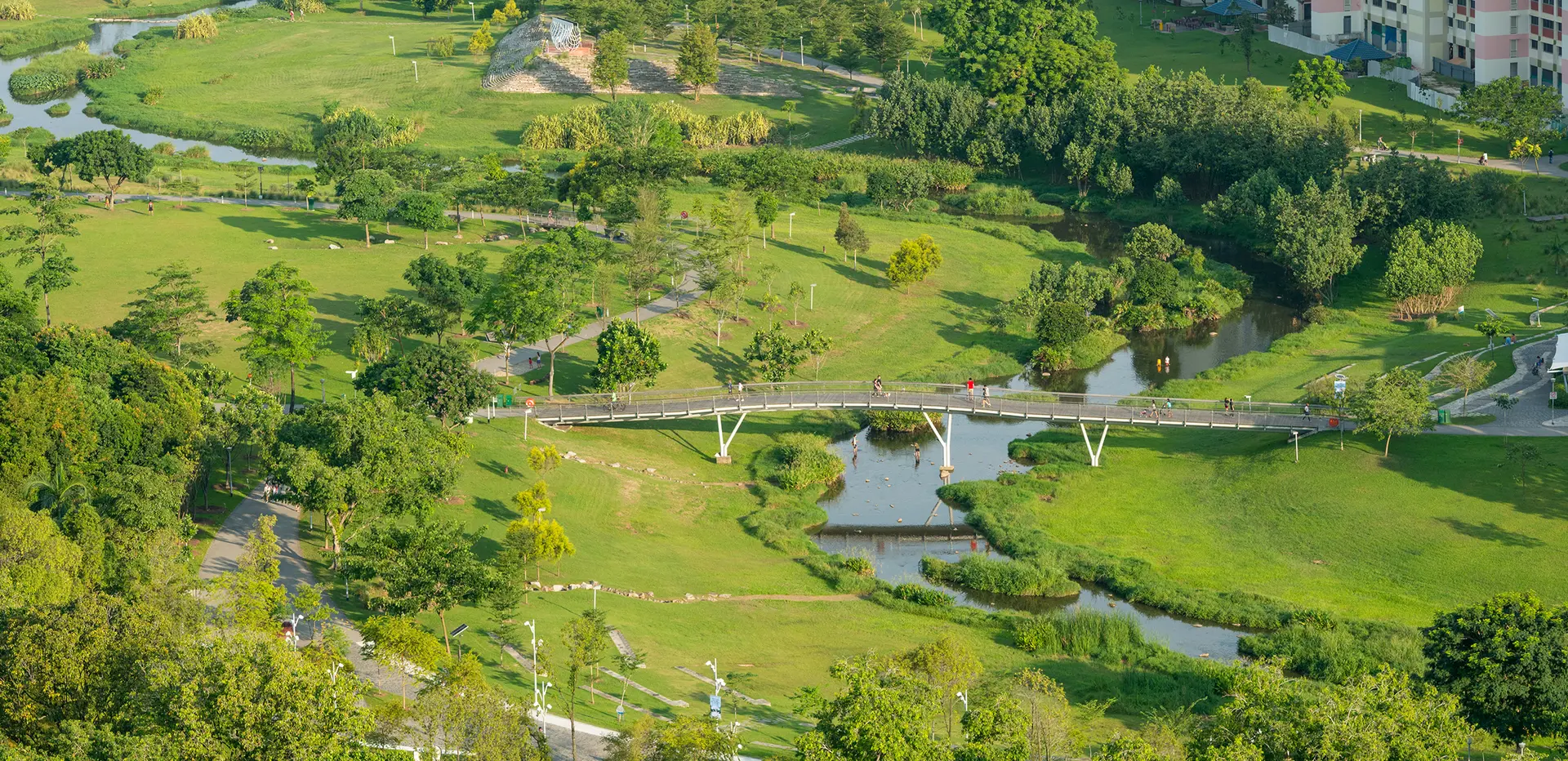A right to space: Does nature belong in the city?

Urbanization is inevitable but as humans continue to expand their habitat, more than 1 million animal and plant species are losing theirs, at times threatened to the point of extinction. Henning Larsen’s Global Design Director of Landscape, Sonja Stockmarr is on a mission to solve this exact paradox; how can we create resilient societies where all species can exercise their right to space?
In what way is biodiversity central to how you approach the challenge of creating resilient societies?
“For more than two decades, I have worked with nature as a design driver, regardless of scale, typology, and discipline. Through those years, nature has experienced a huge loss of biodiversity. But, through the past twenty years, we have also taken a leap in technological and digital development, and that allows us to understand ecosystems and cycles, climates, and natural environments correctly and adapt our design to achieve the right conditions for nature to flourish.”
Why is it important to work with biodiversity in urban planning?
“The benefits of having access to nature in cities are vast and many. But most importantly, we need to get back on track and (re)create space for nature and restore habitats. It should not be a choice between city or nature. It is an option to have both. We need both, but we must work smart so nature doesn’t get the short end of the stick in solving the rapid urbanization the world is undergoing. We need to be part of the pyramid and not on top!”

What challenges does the global biodiversity crisis pose to the construction industry?
“The biggest challenge is still that everything comes down to dollars and pounds. This clashes with what citizens are asking for. People are asking for accessibility to nature and the positive effects that nature has on humans are well-documented. So, it’s not only plants and greenery that’s cut in construction budgets. It’s our well-being.”
What can we do to create a healthier and greener city?
“We are on the right path, but it saddens me each time I hear about new highways being planned, bridges, and artificial islands. We think these are necessary for people, but we neglect to consider the implications of these large constructions on nature and the animal kingdom. So instead, I think we need to find new ways to collaborate across landscape, urbanism, and architecture to disrupt typologies and programming.
Agriculture for example is a very monofunctional landscape; historically, agriculture and urbanization do not go hand in hand. But perhaps they could? To accelerate the restoration of biodiversity, we should stress the need for green outdoor spaces in urban areas, whenever we have the chance, and design landscapes that not only solve human needs but look at the larger ecosystem.
We need to be aware of our role as humans, biodiversity is not always visible, it happens below ground and below water as well.”

Do you have a favorite project?
“It’s hard to pick only just one but I am particularly excited about World of Volvo, an experience center in Gothenburg, which is currently under construction. Contrary to what we usually experience – that the landscape is a supplement to the building – the landscape and the architecture have been treated equally by Volvo, resulting in a fully integrated design. Based on the Swedes’ culture around nature and the freedom to roam, we’ve tried to recreate a native piece of nature around the World of Volvo. This means that anyone can take a walk among pine trees and blueberries all year round, 24 hours a day, as the park is no different from the rest of Swedish nature; it’s open to everyone.
We often use the word “green” to describe landscapes, neglecting to acknowledge that landscapes are also blue. Water is an integral part of restoring and protecting wildlife. At Jordal Sports Park in Oslo, the landscape design included restoring a stream that had been running in tubes below ground since 1900. Reestablishing the creek at ground level also included installing fish ladders to allow salmon through and secure access to their spawn locations. I think that story serves as the perfect testament to why landscape architecture matters.”

So, does nature belong in the city?
“Yes, most definitely. And cities play a vital role in repairing the damage that we’ve caused to nature.
First, I think we can all contribute to putting pressure on policymakers and political influencers to increase the proportion of landscape architecture within the urban realm e.g., more parks, vertical gardens, urban farming, and green roofs.
Furthermore, as landscape architects, architects, and urban planners, we need to hold each other accountable for the planet. Loss of biodiversity, extreme weather, and material shortage are not challenges that we can solve overnight, but we cannot afford to not do anything about them. Our window of time is now. Let us make space for nature.”



